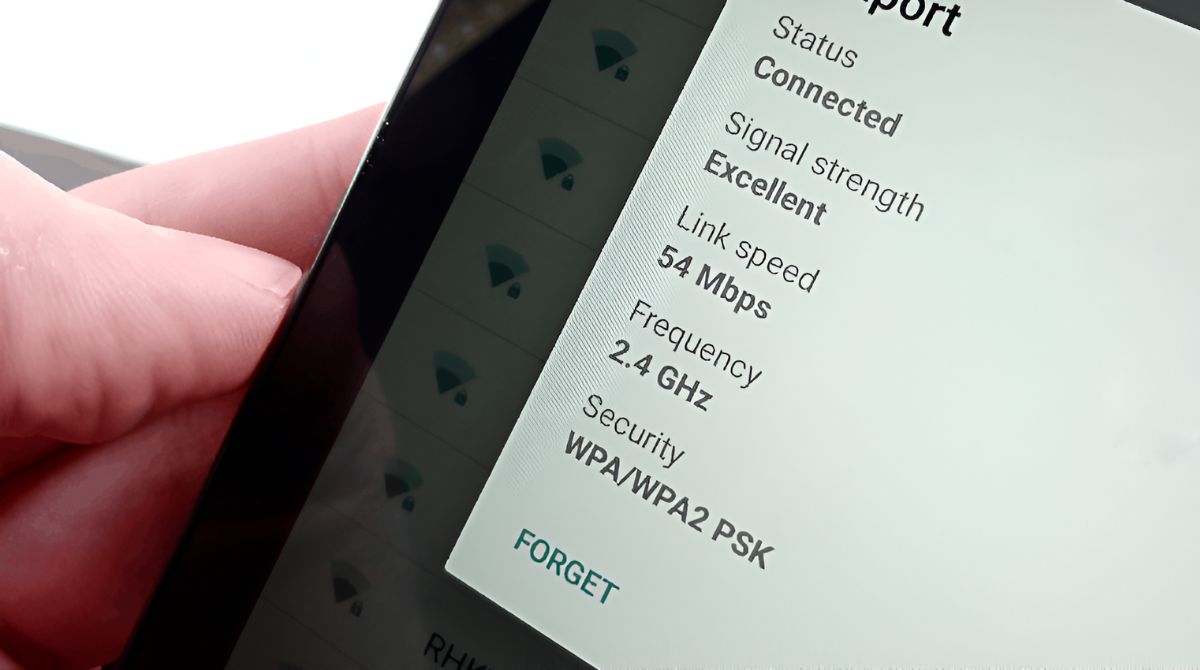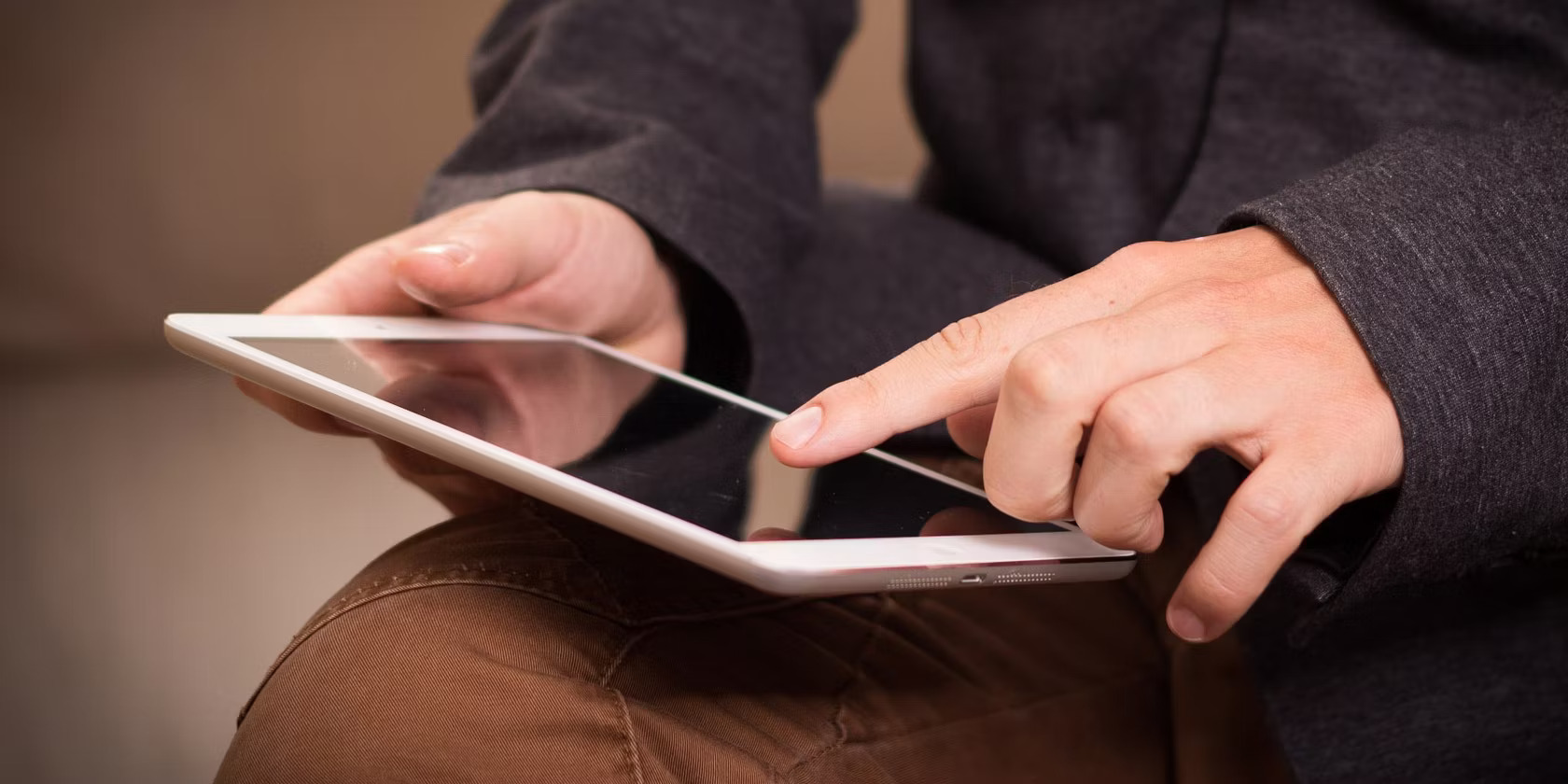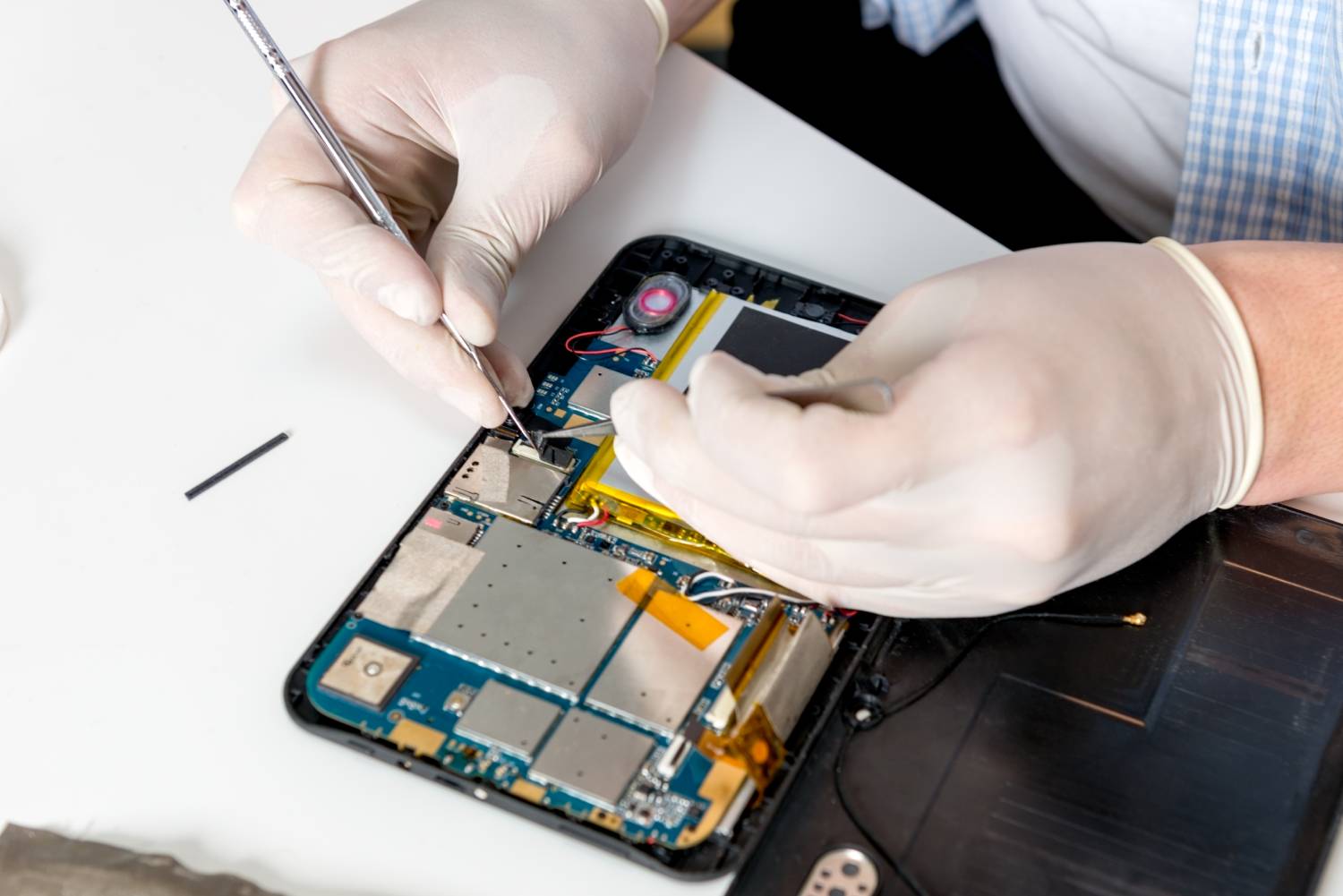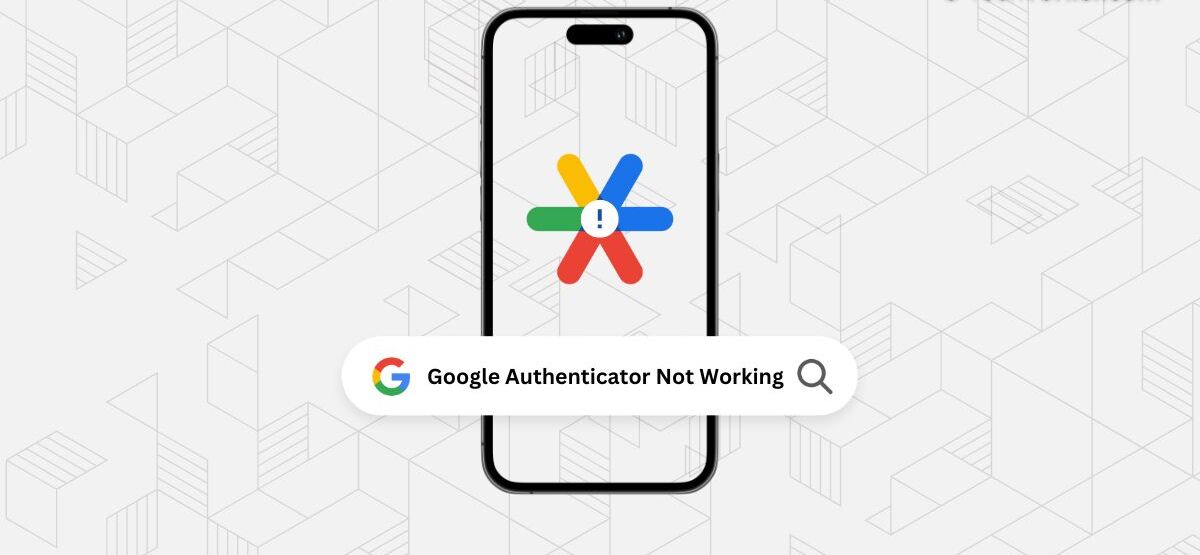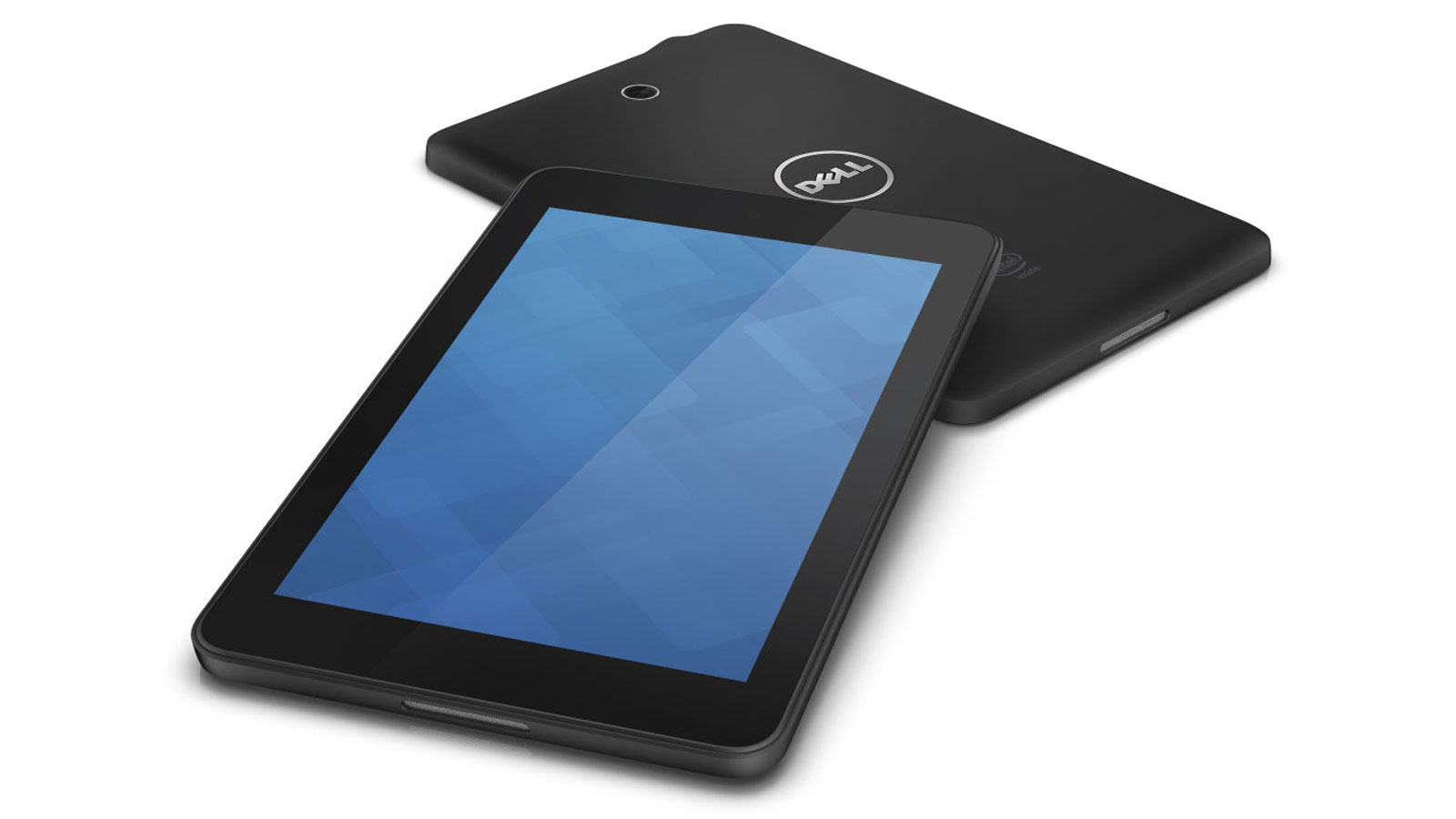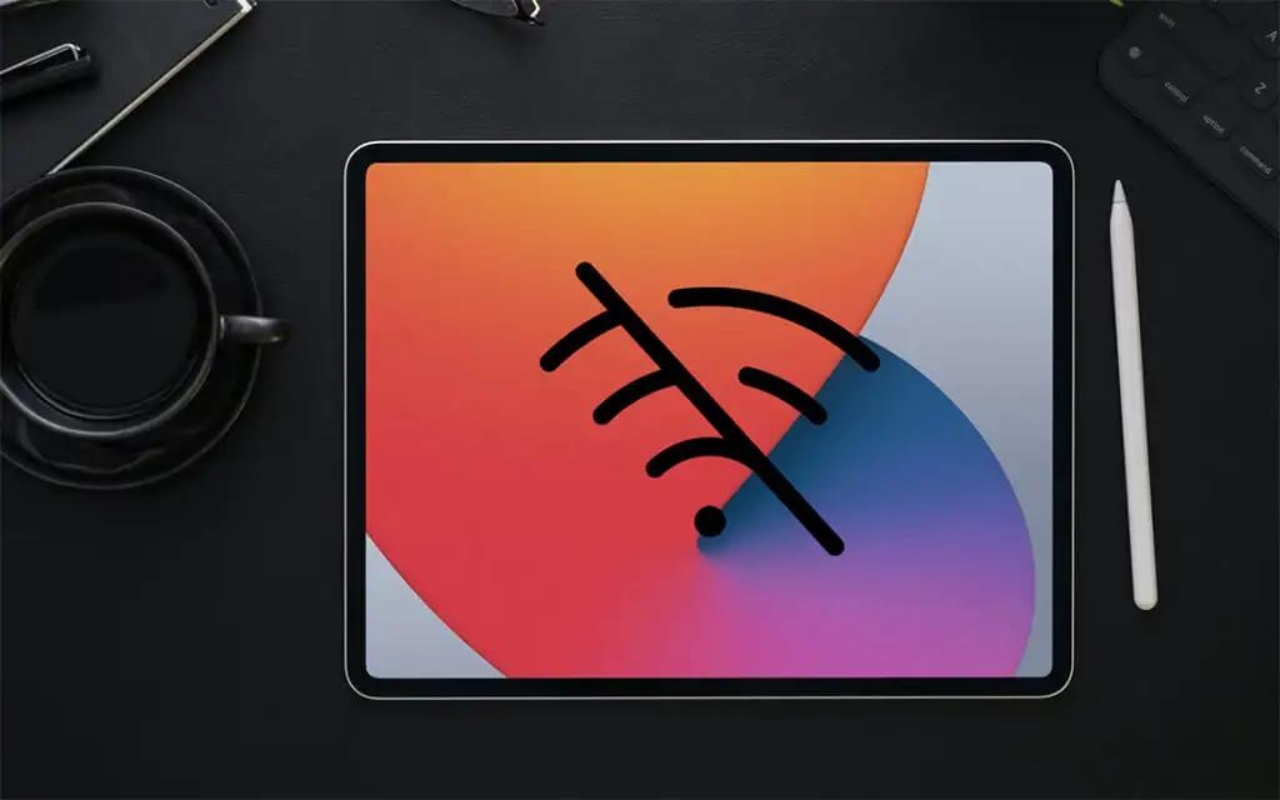Introduction:
Are you facing an authentication problem on your tablet? Don’t worry; you’re not alone. Authentication issues can be frustrating, especially when you’re unable to access your device or important apps. Fortunately, most authentication problems have simple solutions. In this article, we will explore common authentication problems and how to fix them on your tablet.
Tablets have become an integral part of our lives, serving as a convenient tool for communication, entertainment, and productivity. However, they also require various authentication measures to protect your data and ensure privacy. Whether it’s a forgotten password, incorrect credentials, Wi-Fi connection problems, or even issues with two-factor authentication, we’ve got you covered.
Through troubleshooting common authentication problems, you can regain access to your tablet and prevent further inconvenience. We will guide you through the necessary steps to resolve each issue and get your tablet up and running again.
It’s essential to note that before attempting any fixes, it’s crucial to ensure your tablet is connected to a stable internet connection. A stable connection guarantees a smoother authentication process and allows for the necessary updates to be installed if needed.
So, if you’re ready to troubleshoot and resolve authentication problems on your tablet, let’s begin exploring the common issues and their solutions. Whether you have an Android, iOS, or Windows tablet, the methods outlined in this article can help you overcome these authentication roadblocks and get back to enjoying your device to its fullest potential.
Common Authentication Problems:
Authentication problems can arise for various reasons, causing frustration and preventing you from accessing your tablet. By understanding the common authentication problems, you can better troubleshoot and resolve the issues. Let’s take a closer look at some of the most common authentication problems on tablets:
- Forgot Password: One of the most common authentication issues is forgetting your tablet’s password or PIN. This can happen when you haven’t used your tablet for a while or if you recently changed your password. Luckily, most tablets offer a password recovery option or a way to reset your password. Typically, you’ll need to provide your Google or Apple account credentials associated with your tablet to regain access.
- Incorrect Credentials: Another common authentication problem is entering incorrect login credentials. Double-check that you’re entering the correct username and password for your tablet’s account. Pay attention to uppercase and lowercase letters, as passwords are case-sensitive. If you’re unsure about your credentials, consider using the “Forgot Password” option to reset your password and regain access.
- Wi-Fi Connection Issues: Sometimes, authentication problems can arise due to Wi-Fi connectivity issues. If you’re experiencing authentication failures when trying to connect to Wi-Fi networks, ensure that you’re entering the correct Wi-Fi password. Additionally, check that your tablet has a stable internet connection and that the Wi-Fi network you’re trying to connect to is functioning properly.
- Two-Factor Authentication: Two-factor authentication provides an extra layer of security by requiring a verification code in addition to your password. If you have enabled two-factor authentication on your tablet, make sure you’re entering the correct verification code. The code is typically sent to your registered mobile device or email. If you’re having trouble receiving or entering the code, contact your service provider for assistance.
- Account Lockouts: Some tablets have security features that lock the device after multiple failed login attempts. If you’re locked out of your tablet, wait for a few minutes and try again. Alternatively, you may need to follow the instructions provided by your tablet’s manufacturer or contact customer support for further assistance in unlocking your device.
These are just a few examples of common authentication problems on tablets. Each issue may have a different solution, and it’s essential to follow the instructions specific to your tablet’s make and model. In the next sections, we will delve deeper into the solutions for each problem to help you overcome these authentication challenges and regain access to your tablet.
Forgot Password:
Forgetting your tablet’s password or PIN can be quite frustrating, but don’t worry, there are steps you can take to regain access. Here’s what you can do if you’ve forgotten your tablet’s password:
1. Password Recovery Option: Most tablets offer a password recovery option that allows you to regain access to your device. On the lock screen, look for the “Forgot Password” or “Reset Password” option. Tap on it, and you’ll be prompted to enter your Google or Apple account credentials associated with your tablet. Follow the instructions to reset your password and unlock your tablet.
2. Factory Reset: If the password recovery option is not available or doesn’t work, you may need to perform a factory reset on your tablet. Keep in mind that a factory reset will erase all data from your tablet, so it’s crucial to back up any important files beforehand.
To perform a factory reset, you can usually follow these steps:
- Power off your tablet.
- Press and hold the volume up button and the power button simultaneously.
- Release both buttons when you see the tablet’s logo or the Android/iOS recovery screen.
- Use the volume buttons to navigate to the “Factory Reset” or “Wipe Data” option.
- Press the power button to select the option.
- Confirm the factory reset by selecting “Yes” or “Confirm”.
- Wait for the reset process to complete, and your tablet will restart.
After the factory reset, your tablet will be restored to its original settings, and you’ll need to set it up again. Remember to create a new password and choose one that is easy for you to remember, but difficult for others to guess.
Forgetting your tablet’s password can be frustrating, but by utilizing the password recovery option or performing a factory reset, you can regain access to your tablet and continue using it as before. Just remember to create a new password that you can easily remember to prevent future authentication problems.
Incorrect Credentials:
Entering incorrect login credentials is a common authentication problem that can prevent you from accessing your tablet. If you’re experiencing issues with incorrect credentials, here are some steps you can take to resolve the problem:
1. Double-Check Your Credentials: Ensure that you’re entering the correct username and password for your tablet’s account. Check for any spelling mistakes or typing errors. Remember, passwords are case-sensitive, so make sure you’re using the correct capitalization.
2. Use the “Forgot Password” Option: If you’re unsure about your credentials or if you’ve recently changed your password and forgotten it, look for the “Forgot Password” or “Reset Password” option on the login screen. Tap on it and follow the instructions to reset your password. You may need to provide your Google or Apple account credentials associated with your tablet.
3. Try an Alternative Account: If you have multiple accounts on your tablet, try signing in with a different account to see if the issue lies with a specific account. This can help determine if the problem is related to the credentials or the tablet itself.
4. Contact Customer Support: If you’ve tried the above steps and you’re still unable to resolve the incorrect credentials issue, it may be best to get in touch with customer support for further assistance. They can guide you through the troubleshooting process specific to your tablet’s make and model.
5. Update Account Information: Sometimes, authentication problems can occur if your account information is outdated or needs to be updated. Visit the account settings on your tablet and ensure that your email address, phone number, and other account details are accurate and up to date.
Remember, if you recently changed your password, make sure to update it on all your devices and services to avoid any authentication problems in the future. Keeping your credentials secure and up to date is essential for smooth and hassle-free access to your tablet.
By following these steps and ensuring the accuracy of your login credentials, you should be able to overcome the incorrect credentials authentication problem and regain access to your tablet.
Wi-Fi Connection Issues:
Wi-Fi connection issues can sometimes lead to authentication problems on your tablet. If you’re experiencing difficulties connecting to Wi-Fi networks or facing authentication failures, here are some steps you can take to address the problem:
1. Check Wi-Fi Password: Double-check that you’re entering the correct Wi-Fi password. It’s common to mistype or forget the password, which can lead to authentication failures. If you’re unsure about the password, try connecting to the Wi-Fi network from another device or ask the network administrator for assistance.
2. Move Closer to the Wi-Fi Router: Weak Wi-Fi signals can cause authentication problems. If you’re far away from the Wi-Fi router, move closer to see if the authentication issue resolves. Sometimes, obstacles or interference can weaken the Wi-Fi signal, so positioning yourself in proximity to the router can improve connectivity.
3. Restart Wi-Fi Router: Sometimes, the Wi-Fi router may encounter temporary issues that can affect authentication. Try restarting your Wi-Fi router by unplugging it from the power source, waiting a few seconds, and then plugging it back in. Allow the router to fully restart and then try connecting your tablet to the Wi-Fi network again.
4. Forget and Reconnect to Wi-Fi Network: If you’re still facing Wi-Fi authentication problems, you can try forgetting the Wi-Fi network on your tablet and then reconnecting to it. To do this, go to the Wi-Fi settings on your tablet, locate the network causing the problem, and select the option to forget it. Afterward, search for available Wi-Fi networks and reconnect to the network by entering the correct password.
5. Reset Network Settings: If the above steps don’t resolve the issue, you can try resetting the network settings on your tablet. This will remove any saved Wi-Fi networks, VPN configurations, and other network-related settings. To reset network settings on an Android device, go to the Settings menu, choose “System” or “System and Device,” then select “Advanced” or “Reset Options,” and finally, tap on “Reset Wi-Fi, Mobile & Bluetooth” or “Network settings reset.” On an iOS device, go to Settings, select “General,” choose “Reset,” and then tap on “Reset Network Settings.” Keep in mind that after resetting network settings, you’ll need to set up your Wi-Fi connections again.
6. Check Router Settings: If none of the above steps resolve the Wi-Fi authentication problem, there might be specific settings on your Wi-Fi router that are causing the issue. Access your router’s settings through a web browser by entering the router’s IP address in the address bar. Check if there are any security settings, such as MAC filtering or firewall settings, that could be affecting your tablet’s authentication. Consult the router’s user manual or contact the manufacturer for guidance on adjusting these settings.
By following these steps, you should be able to troubleshoot and resolve Wi-Fi connection issues and authentication problems on your tablet. Reliable Wi-Fi connectivity is crucial for smooth operation and optimal performance, so it’s worth investing time in resolving any Wi-Fi-related problems.
Two-Factor Authentication:
Two-factor authentication (2FA) provides an additional layer of security for your tablet by requiring an extra verification code in addition to your password. While 2FA enhances your device’s security, it can sometimes cause authentication problems. If you’re facing issues with two-factor authentication on your tablet, here are some steps you can take to resolve the problem:
1. Check Verification Code: When logging in with two-factor authentication, ensure that you’re entering the correct verification code. Check if the code has been sent to your registered mobile device or email address. It’s essential to enter the code within the given time limit before it expires. If you’re not receiving the code, make sure your mobile device or email is accessible and functioning properly.
2. Resync Time: Two-factor authentication relies on accurate time settings to generate and validate the verification code. If your tablet’s time settings are incorrect, it may cause authentication failures. Go to your tablet’s settings and check the time settings. Make sure it’s set to the correct time zone and set to update automatically.
3. Backup Verification Methods: Many two-factor authentication systems offer backup methods like backup codes or backup authentication apps. These backup methods can be useful if you’re unable to receive the verification code through the primary method. Before enabling two-factor authentication on your tablet, ensure that you have set up and stored the backup methods in a safe place.
4. Contact Service Provider: If you’re consistently unable to authenticate through two-factor authentication, it’s recommended to contact your service provider for further assistance. They can help troubleshoot the issue and ensure that your tablet is properly set up to receive the verification codes. They may also be able to offer alternative authentication methods or temporary solutions while the issue is being resolved.
5. Temporary Disable: In some cases, you may need to temporarily disable two-factor authentication on your tablet to regain access. This may be necessary if you’re facing persistent authentication failures or if you’ve lost access to your primary verification method. To disable two-factor authentication, access your tablet’s security settings and turn off the two-factor authentication feature. Keep in mind that turning off two-factor authentication reduces the security of your device, so it’s recommended to re-enable it once the issue is resolved.
Two-factor authentication adds an extra layer of security to your tablet, ensuring that only authorized individuals can access it. By following these steps, you should be able to troubleshoot and resolve any authentication problems related to two-factor authentication on your tablet.
Account Lockouts:
Account lockouts can occur when you enter incorrect login credentials multiple times, causing your tablet to lock as a security measure. If you’re experiencing an account lockout on your tablet, here are some steps you can take to regain access:
1. Wait and Try Again: If you’ve entered incorrect login credentials and triggered an account lockout, the best course of action is to wait for a few minutes and then attempt to log in again. In some cases, the lockout is temporary, and waiting will allow you to try again after a specific period of time.
2. Follow Manufacturer’s Instructions: Different tablet manufacturers may have specific instructions for unlocking the device after an account lockout. Check the manufacturer’s website or user manual for information on how to unlock your tablet. The instructions may involve using an unlock code or performing a specific key combination to bypass the lockout.
3. Reset Tablet: If you’re unable to unlock your tablet using the manufacturer’s instructions or if the lockout persists, you may need to reset your tablet. Performing a factory reset will erase all data on your tablet, including the lockout, and restore it to its default settings. Remember to back up any important data before proceeding with a factory reset.
To perform a factory reset, the general steps are as follows:
- Power off your tablet.
- Press and hold the volume up button and the power button simultaneously.
- Release both buttons when you see the tablet’s logo or the Android/iOS recovery screen.
- Use the volume buttons to navigate to the “Factory Reset” or “Wipe Data” option.
- Press the power button to select the option.
- Confirm the factory reset by selecting “Yes” or “Confirm”.
- Wait for the reset process to complete, and your tablet will restart.
After the reset, you’ll need to set up your tablet again and create a new password or PIN. Ensure that you choose a strong and memorable password to prevent any future lockouts.
Account lockouts can be frustrating, but by following these steps, you can regain access to your tablet and prevent any further issues. Remember to consult the manufacturer’s instructions and guidelines specific to your tablet model if available. If you’re unsure or need additional assistance, consider reaching out to customer support for further guidance.
Untrusted Security Certificates:
Encountering untrusted security certificates on your tablet can cause authentication problems and raise concerns about the security of your device. When a website or app presents an untrusted security certificate, it means that the certificate has not been verified or is not recognized as legitimate by your tablet’s operating system. Here are some steps you can take to address this issue:
1. Verify the Certificate: Before taking any action, it’s essential to verify if the untrusted security certificate is indeed a cause for concern. Sometimes, the certificate may have been issued by a trusted authority that your tablet is not currently recognizing. Double-check the website or app’s URL to ensure you’re accessing the correct address and not a phishing website. If you’re confident in the legitimacy of the website or app, you may choose to proceed with caution.
2. Update Your Tablet’s Software: Outdated software can sometimes lead to untrusted certificate issues. Ensure that your tablet’s software, including the operating system and web browsers, is up to date. Updates often include the latest security patches and recognized certificate authorities, which can help mitigate untrusted certificate problems.
3. Check the Date and Time Settings: Incorrect date and time settings on your tablet can also trigger untrusted certificate errors. Make sure that the date, time, and time zone settings on your tablet are accurate and correctly configured. Automatic time synchronization is recommended to ensure the most precise settings.
4. Bypass the Warning: If you’re confident in the legitimacy of the website or app and want to proceed despite the untrusted certificate warning, you can choose to bypass the warning and continue. However, be cautious when taking this approach, as it can potentially expose your device to security risks. Only bypass the warning if you fully trust the website or app and understand the potential implications.
5. Clear Browser’s Cache: If you’re encountering the untrusted certificate error in a web browser, clearing the browser’s cache can help resolve the issue. Navigate to the browser’s settings or preferences, locate the option to clear cache and browsing data, and proceed with the deletion. Restart the browser and attempt to access the website again.
6. Install Trusted Certificate Authorities: In some cases, you may need to manually install the trusted certificate authorities on your tablet. Search for the specific certificate authority’s website and follow their instructions to download and install the necessary certificates. This step may require technical knowledge and should be undertaken with caution.
If the issue persists or you’re unsure about the authenticity of the certificate, it’s recommended to avoid accessing the website or app. Reach out to the website’s support or contact the app’s developer for further guidance on resolving the untrusted certificate issue.
By following these steps, you can address untrusted security certificates on your tablet and make informed decisions regarding the legitimacy and security of websites or apps that present such warnings.
Clearing Cache and Data:
Clearing the cache and data on your tablet is a troubleshooting step that can help resolve authentication problems and improve overall device performance. The cache and data are temporary files and settings stored by various apps and services on your tablet. Over time, these files can accumulate and potentially cause authentication issues. Here’s how you can clear the cache and data on your tablet:
1. Clear App Cache: Each app on your tablet has its own cache, which stores temporary data to improve app performance. Clearing the app cache can resolve authentication issues specific to certain apps. To clear the cache for a specific app, go to the Settings menu on your tablet, choose “Apps” or “Applications,” select the desired app, and then tap on the “Clear Cache” or “Storage” option. Confirm the action, and the cache for that app will be cleared.
2. Clear App Data: In addition to the cache, clearing the app data can also help resolve authentication problems. Clearing app data will delete all app settings and user data, so be cautious as this action may require you to sign in again and set up the app from scratch. To clear app data, follow the same steps as clearing app cache, but instead of selecting “Clear Cache,” choose “Clear Data” or “Clear Storage.”
3. Clear System Cache: Clearing the system cache can address authentication issues that may be caused by system-level processes or conflicts. The steps to clear the system cache vary depending on your tablet’s make and model, but generally involve following these instructions:
- Power off your tablet.
- Press and hold the volume up button and the power button simultaneously.
- Release both buttons when you see the tablet’s logo or the Android/iOS recovery screen.
- Use the volume buttons to navigate to the “Wipe Cache Partition” or “Cache/Data Partition” option.
- Press the power button to select the option.
- Confirm the cache wipe by selecting “Yes” or “Confirm”.
- Wait for the process to complete, and your tablet will restart.
4. Restart Your Tablet: After clearing the cache and data, it’s a good practice to restart your tablet. Restarting can help apply the changes and ensure a fresh start for your device. Press and hold the power button, then select the option to restart your tablet.
Clearing the cache and data on your tablet helps to remove temporary files that may be causing authentication problems. However, keep in mind that clearing app data will reset app settings, requiring you to sign in again and set up the app if applicable. Make sure to back up any important data beforehand to avoid losing important information.
By following these steps, you can troubleshoot authentication issues on your tablet and potentially improve its overall performance. If the problem persists, or if you’re unsure about clearing cache and data for a specific app, consider reaching out to the app’s support or your device manufacturer for further assistance.
Restarting the Tablet:
Restarting your tablet is a simple yet effective troubleshooting step that can help resolve a variety of authentication problems. Restarting clears out temporary system files, closes background processes, and refreshes the device’s overall state. If you’re experiencing authentication issues on your tablet, follow these steps to restart it:
1. Press and Hold the Power Button: Locate the power button on your tablet. Press and hold the button until a power menu appears on the screen. The power button is usually located on the side or top of the device, depending on the make and model.
2. Select Restart: On the power menu, select the “Restart” or “Reboot” option. This will initiate the restart process and power off your tablet. Wait for a few moments as the device shuts down.
3. Power On Your Tablet: After a brief moment, press the power button again to power on your tablet. Wait for it to boot up and reach the lock screen or home screen.
4. Test Authentication: Once your tablet has fully restarted, try accessing the app or service that was causing the authentication issue. Enter your credentials and see if the problem persists. In many cases, a simple restart can resolve authentication problems by resetting any temporary glitches or conflicts that may have been affecting the device.
If you’re still facing authentication issues after restarting your tablet, you may need to try other troubleshooting methods specific to the problem you’re encountering. However, restarting the tablet should always be the first step in your troubleshooting process as it is quick and often effective in resolving minor software-related issues.
Restarting your tablet is a general remedy that can help improve the device’s performance and resolve authentication problems. It’s a good habit to restart your tablet periodically, even if you’re not experiencing any issues, to keep the system running smoothly.
If the authentication problem persists after restarting your tablet, you may need to explore other troubleshooting solutions, such as clearing cache and data, updating software, or contacting customer support for further assistance.
Updating Software:
Keeping your tablet’s software up to date is essential for optimal performance and security. Outdated software can sometimes lead to authentication problems and other issues. If you’re experiencing authentication issues on your tablet, updating the software can often resolve the problem. Here’s how you can update the software on your tablet:
1. Check for System Updates: Go to the settings menu on your tablet and look for the “System” or “Software Update” option. Tap on it, and the device will check for any available updates. If an update is available, follow the on-screen prompts to download and install it. Depending on your tablet’s make and model, you may need to connect to Wi-Fi or have sufficient battery life to proceed with the update.
2. Install App Updates: In addition to the system updates, it’s also important to update your installed apps. App updates often include bug fixes and security patches that can help resolve authentication issues. Open the app store on your tablet, search for the specific app, and if an update is available, select the option to update. Alternatively, you can set your apps to automatically update in the app store settings.
3. Restart Your Tablet: Once the updates are installed, it’s a good practice to restart your tablet. Restarting helps apply the changes and ensures that the updated software is fully activated. Press and hold the power button, then select the option to restart your tablet.
4. Test Authentication: After your tablet has restarted, try accessing the app or service that was causing the authentication issue. Enter your credentials and see if the problem persists. In many cases, updating the software resolves authentication problems by fixing any software bugs or vulnerabilities that may have caused the issue.
Regularly checking for and installing software updates is crucial for the overall security and performance of your tablet. It ensures that your device has the latest features, enhancements, and security patches to protect your information and provide a smooth user experience.
If you continue to experience authentication problems after updating the software, you may need to try other troubleshooting methods or contact the manufacturer’s customer support for further assistance. They can provide guidance specific to your tablet’s make and model and help you resolve any persistent issues.
By regularly updating your tablet’s software, you can minimize authentication problems and enjoy the full benefits of your device’s latest features and security enhancements.
Contacting Support:
If you’ve tried the previous troubleshooting steps and are still experiencing authentication problems on your tablet, it may be time to reach out to customer support for further assistance. Manufacturers and service providers have dedicated support teams that can help resolve complex issues and provide guidance specific to your device. Here’s how you can contact support:
1. Visit the Manufacturer’s Website: Start by visiting the official website of your tablet’s manufacturer. Look for a “Support,” “Contact,” or “Help” section on the website. They may provide troubleshooting guides, FAQs, or a support contact form that you can fill out to describe your issue.
2. Call Customer Support: Check the manufacturer’s website for a customer support phone number. Take note of their hours of operation and any specific instructions they provide. When calling, be prepared to provide information about your tablet’s make, model, and the specific authentication problem you’re experiencing.
3. Email or Live Chat: Some manufacturers offer additional support options such as email or live chat support. Look for these options on their website and provide a detailed description of your authentication problem. Include any error messages or steps you’ve already taken to troubleshoot the issue.
4. Check Online Forums or Communities: Online forums, communities, and social media channels related to your tablet’s brand or operating system can be a valuable resource. Search for similar authentication problems that other users have faced and see if there are any solutions or suggestions available. You can also post your own question, detailing the specific issue you’re encountering, and see if the community can provide any helpful insights.
5. Reach Out to Your Service Provider: If you’re experiencing authentication problems with a specific app or service, consider reaching out to the app’s or service provider’s customer support. They may have specific troubleshooting steps or insights into the authentication issue you’re facing. Contact them through their website, app, or any support channels they provide.
When contacting support, be prepared to provide as much information as possible about your tablet, the authentication problem, and any steps you’ve taken to troubleshoot. This will help support representatives better understand your issue and provide more accurate assistance.
By reaching out to customer support, you can access expert guidance tailored to your tablet’s make and model. They can assist with more advanced troubleshooting steps or provide specific solutions to resolve the authentication problem you’re facing.
Remember to be patient and follow the instructions provided by the support team. They are dedicated to helping you resolve the issue and get your tablet back to full functionality.







